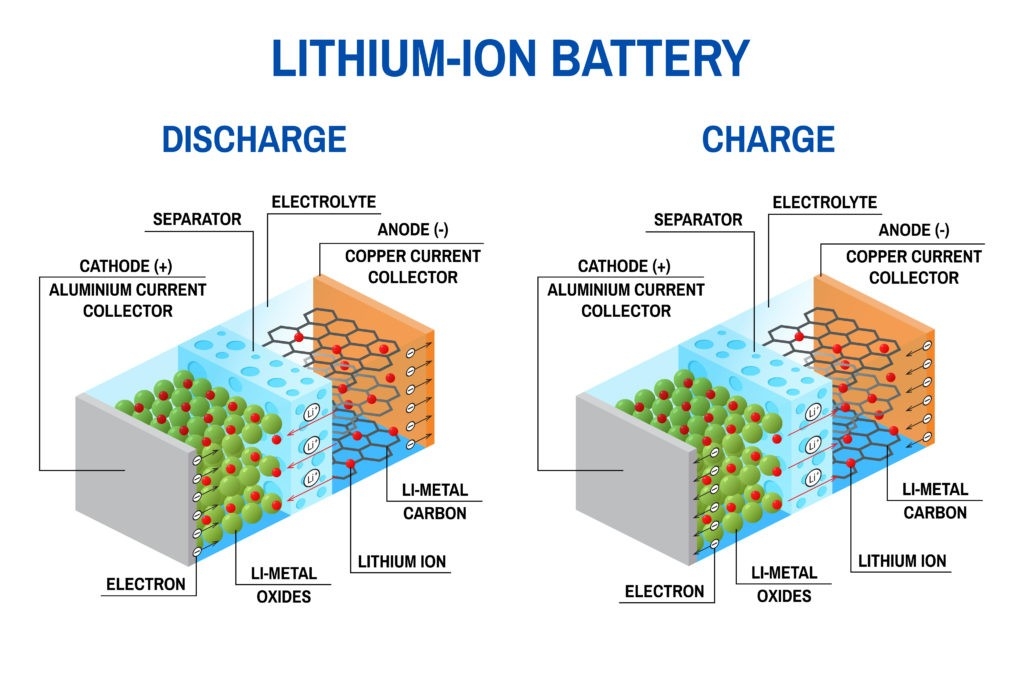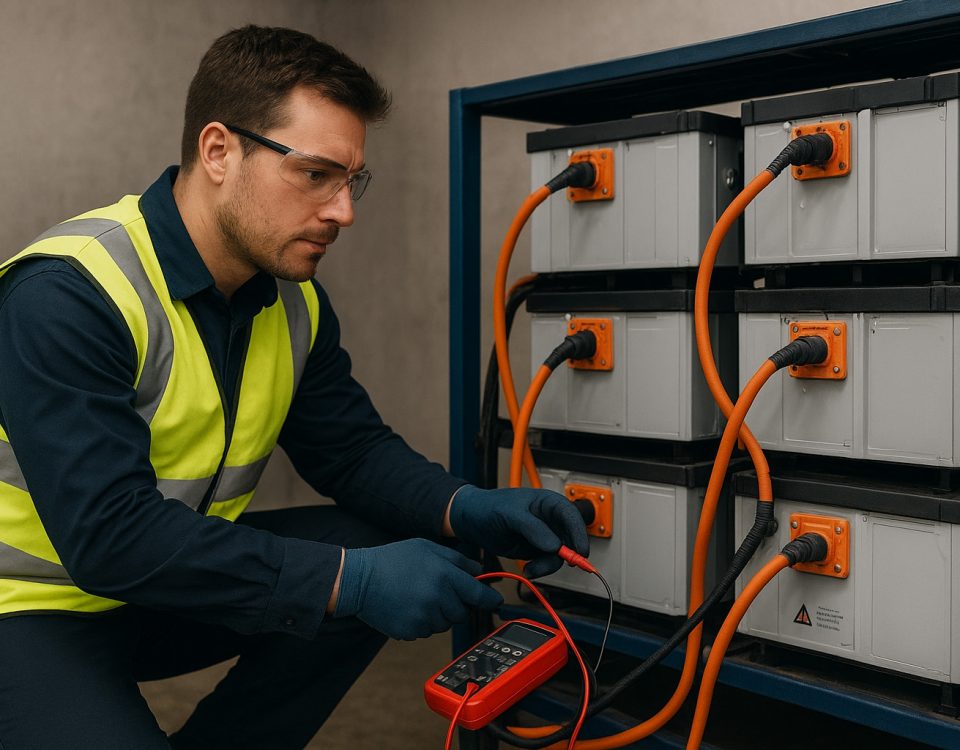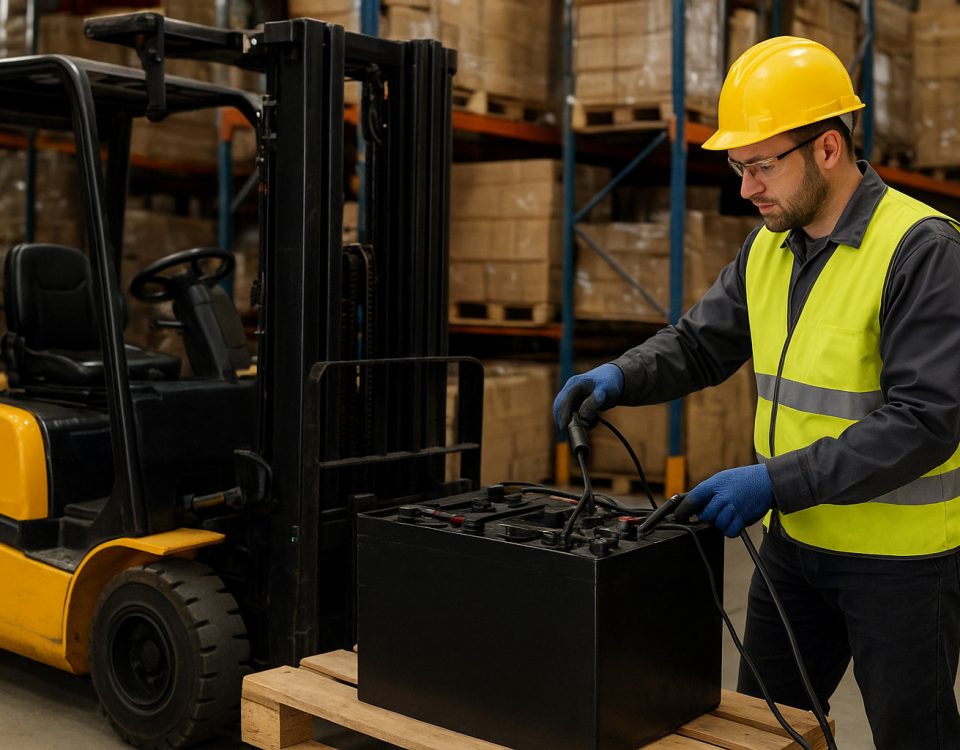Pin lithium-ion là thành phần quan trọng của nhiều thiết bị hiện đại, từ xe điện (EV) đến máy móc công nghiệp và thiết bị điện tử tiêu dùng. Mặc dù pin lithium-ion mang lại hiệu suất ấn tượng, tuổi thọ của chúng có thể bị ảnh hưởng đáng kể bởi cách sử dụng. Một trong những yếu tố quan trọng ảnh hưởng đến tuổi thọ của pin lithium-ion là độ sâu xả (DoD) – tức là lượng điện năng được sử dụng trước khi pin được sạc lại.
Trong bài viết này, chúng ta sẽ tìm hiểu cách thức xả thải sâu và xả thải nông ảnh hưởng đến tuổi thọ của pin lithium, đánh giá lợi ích và nhược điểm của từng phương pháp. Bằng cách hiểu rõ sự khác biệt giữa các phương pháp sạc này, người dùng có thể tối ưu hóa việc sử dụng pin và kéo dài tuổi thọ của pin lithium.
Độ xả (DoD) là gì?
Trước khi đi vào chi tiết, điều quan trọng là phải định nghĩa thuật ngữ này. Độ sâu xả (DoD)Độ sâu xả (Depth of Discharge - DoD) đề cập đến phần trăm dung lượng tổng của pin đã được sử dụng. Ví dụ, nếu bạn có một pin có dung lượng tổng là 100%, việc xả 50% có nghĩa là bạn đã sử dụng một nửa năng lượng của pin. Độ sâu xả thường được biểu thị bằng phần trăm, với 100% có nghĩa là pin đã được xả hết hoàn toàn.
Có hai cách chính mà người dùng thường sử dụng để xả pin lithium: Xả thải nông Và xả sâuMỗi phương pháp đều có tác động riêng biệt đến sức khỏe và tuổi thọ của pin. Hãy cùng tìm hiểu chi tiết về từng phương pháp.
Xả nước nhẹ: Phương pháp "nhẹ nhàng"
Xả điện nhẹ là việc chỉ sử dụng một phần nhỏ dung lượng pin trước khi sạc lại, thường dao động từ 10% đến 30% so với tổng dung lượng pin. Phương pháp này thường được so sánh với việc "sạc bổ sung" pin trong suốt cả ngày thay vì để pin cạn kiệt hoàn toàn.
Lợi ích của việc xả nước nông:
- Tuổi thọ được cải thiện: Xả pin ở mức độ nông được coi là tốt hơn cho việc bảo vệ tuổi thọ của pin. Bằng cách ngăn chặn pin thường xuyên đạt đến mức xả sâu, bạn giảm bớt áp lực lên các thành phần bên trong của pin, điều này có thể làm giảm tuổi thọ của pin nhanh hơn do quá trình xả sâu.
- Giảm mài mòn: Mỗi chu kỳ xả sâu đều gây ra sự mài mòn nhiều hơn cho ắc-quy, do đó việc xả nông sẽ gây ra ít áp lực vật lý hơn. Điều này có nghĩa là sẽ có ít phản ứng hóa học bên trong ắc-quy hơn, từ đó giảm thiểu quá trình suy giảm của các điện cực theo thời gian.
- Số chu kỳ sạc ít hơn: Với các lần xả điện nhẹ, pin trải qua ít chu kỳ sạc-xả đầy đủ hơn, điều này ảnh hưởng trực tiếp đến tuổi thọ tổng thể của pin. Pin lithium thường có số chu kỳ cố định (thường là 500-1000) trước khi dung lượng của chúng bắt đầu suy giảm. Sử dụng pin một cách tiết kiệm hơn giúp kéo dài số chu kỳ này.
Nhược điểm của xả nước nông:
- Không sử dụng hết dung lượng pin: Nhược điểm chính của việc xả pin ở mức độ nông là bạn không tận dụng hết dung lượng của pin. Đối với người dùng cần tận dụng tối đa dung lượng pin trong một lần sạc—chẳng hạn như những người sử dụng xe điện hoặc máy móc công nghiệp—việc xả pin ở mức độ nông có thể không phải là lựa chọn lý tưởng.
- Sạc pin thường xuyên hơn: Vì bạn không xả hết dung lượng pin, bạn có thể phải sạc pin thường xuyên hơn. Mặc dù điều này có thể ít gây hại cho pin về lâu dài, nhưng nó có thể được coi là ít tiện lợi hơn cho một số ứng dụng cụ thể.
Xả sâu: Vượt qua giới hạn
Xả sâu, mặt khác, liên quan đến việc sử dụng một phần lớn hơn của dung lượng pin — thường hơn 80% — trước khi sạc lại. Phương pháp này đòi hỏi nhiều hơn từ pin và đẩy nó gần hơn đến giới hạn của nó, nhưng nó cũng có thể mang lại một số lợi ích trong bối cảnh phù hợp.
Lợi ích của việc xả sâu:
- Sử dụng hết dung lượng pin: Xả sâu đảm bảo rằng bạn đang sử dụng hết công suất khả dụng của pin. Điều này đặc biệt quan trọng trong các ứng dụng yêu cầu công suất năng lượng tối đa, chẳng hạn như xe nâng điện hoặc các phương tiện được sử dụng cho các chuyến đi dài.
- Sạc ít thường xuyên hơn: Bằng cách xả hết pin, bạn sẽ giảm số lần sạc, điều này có thể hữu ích cho những người dùng cần khoảng thời gian dài hơn giữa các lần sạc.
- Tăng cường hiệu quả sử dụng năng lượng (trong một số trường hợp): Trong một số trường hợp, việc xả sâu có thể giúp duy trì hiệu suất năng lượng của một số thiết bị, vì pin cung cấp năng lượng một cách ổn định hơn trong suốt chu kỳ hoạt động của nó.
Nhược điểm của xả sâu:
- Phân hủy nhanh chóng: Việc xả pin sâu thường xuyên sẽ gây áp lực lớn hơn lên các thành phần bên trong của pin. Điều này có thể khiến pin mất dung lượng nhanh hơn, làm giảm tuổi thọ của pin. Pin lithium-ion thường bị suy giảm nhanh hơn khi được sử dụng liên tục trong các chu kỳ xả sâu.
- Nguy cơ tăng cao về việc xả quá mức: Xả sâu có thể làm tăng khả năng pin bị xả quá mức, có thể dẫn đến xả quá mức. Xả quá mức có thể gây hư hỏng vĩnh viễn, khiến pin không thể sử dụng được.
- Mòn pin nhanh hơn: Pin lithium-ionGiống như tất cả các loại pin sạc lại, pin này được thiết kế để hoạt động tốt nhất trong phạm vi giới hạn sạc nhất định. Khi các giới hạn này thường xuyên bị vượt quá, chẳng hạn như trong trường hợp xả sâu, hóa học bên trong pin sẽ bị mài mòn nhiều hơn, điều này có thể làm giảm tuổi thọ tổng thể của pin.
Phương pháp nào là tốt nhất?
Vậy, phương pháp nào là tốt nhất? Câu trả lời phụ thuộc chủ yếu vào cách sử dụng pin và các yêu cầu cụ thể của thiết bị.
- Đối với xe điện (EV) và các ứng dụng hiệu suất cao: Xả pin ở mức độ nhẹ thường tốt hơn, vì nó giúp bảo vệ sức khỏe của pin và tối đa hóa số lần sạc/xả mà pin có thể chịu đựng. Mặc dù xả pin ở mức độ sâu có thể cung cấp cho người dùng phạm vi sử dụng lớn hơn, nhưng việc thường xuyên xả pin ở mức độ sâu có thể làm giảm đáng kể tuổi thọ của pin, dẫn đến việc phải thay thế pin với chi phí cao theo thời gian.
- Đối với lưu trữ năng lượng tĩnh hoặc các ứng dụng có cường độ thấp: Xả sâu có thể được chấp nhận trong một số trường hợp, đặc biệt là đối với các hệ thống không phải trải qua chu kỳ sạc/xả thường xuyên hoặc được thiết kế với mục tiêu kéo dài tuổi thọ pin. Trong những trường hợp này, người dùng có thể lựa chọn xả sâu hơn nếu ưu tiên của họ là tận dụng tối đa năng lượng từ pin trước khi sạc lại.
- Đối với Thiết bị Điện tử Tiêu dùng: Xả pin ở mức thấp là phương pháp có lợi nhất về lâu dài. Việc xả pin sâu thường xuyên trên các thiết bị như điện thoại thông minh hoặc laptop có thể dẫn đến việc pin bị hao mòn nhanh hơn và giảm dung lượng pin tổng thể.
Vai trò của Hệ thống quản lý pin (BMS)
Một yếu tố quan trọng trong việc quản lý cả xả thải sâu và xả thải nông là Hệ thống quản lý pin (BMS)Hệ thống quản lý pin (BMS) giúp điều chỉnh hiệu suất pin bằng cách ngăn chặn các tình huống xả quá mức và sạc quá mức, điều này rất quan trọng để tối ưu hóa tuổi thọ của pin lithium. Công nghệ BMS hiện đại cũng theo dõi nhiệt độ và tình trạng sức khỏe của pin, đảm bảo người dùng có thể tận dụng tối đa pin của mình đồng thời tránh các điều kiện có thể gây hư hỏng lâu dài.
RICHYE: Đối tác đáng tin cậy trong công nghệ pin lithium
Tại RICHYEChúng tôi chuyên sản xuất pin lithium hiệu suất cao được thiết kế cho nhiều ứng dụng khác nhau, từ xe điện đến máy móc công nghiệp. Pin của chúng tôi được thiết kế để cung cấp độ tin cậy, an toàn và hiệu suất năng lượng xuất sắc. Với cam kết về chất lượng và đổi mới, pin RICHYE mang lại hiệu suất vượt trội trên mọi phương diện. Dù bạn cần pin hoạt động tốt trong chu kỳ xả nông hay giải pháp bền bỉ cho ứng dụng xả sâu, RICHYE là đối tác đáng tin cậy mang lại độ tin cậy và hiệu suất lâu dài.
Kết luận: Cân bằng giữa hiệu suất và độ bền
Khi nói đến việc tối ưu hóa tuổi thọ của pin lithium, độ sâu xả pin đóng vai trò quan trọng. Xả pin ở mức độ nông thường tốt hơn cho việc kéo dài tuổi thọ pin, trong khi xả pin ở mức độ sâu có thể hữu ích khi cần công suất đầu ra tối đa. Hiểu rõ cách mỗi phương pháp ảnh hưởng đến pin và áp dụng chiến lược phù hợp dựa trên mục đích sử dụng có thể giúp người dùng tận dụng tối đa pin lithium-ion của mình.
Bằng cách lựa chọn phương pháp phù hợp và hợp tác với các nhà sản xuất pin đáng tin cậy như RICHYECả doanh nghiệp và người tiêu dùng đều có thể đảm bảo hiệu suất tối ưu và nguồn điện bền bỉ.




